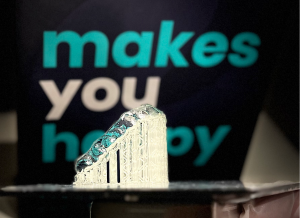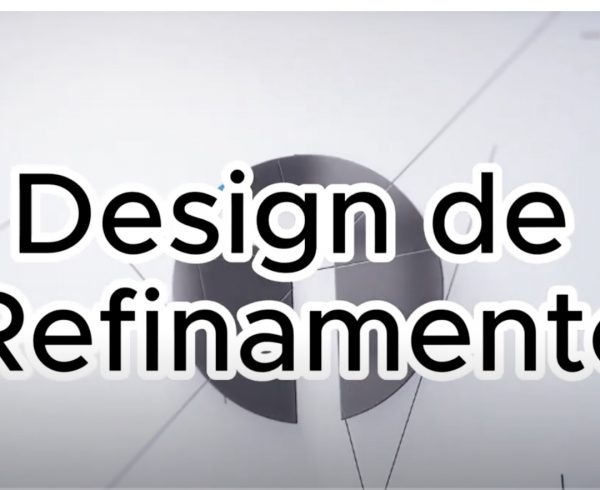This article was authored by Henrique Bacci
Introduction
 Orthodontic aligners have rapidly evolved, with new technologies emerging to meet the growing demand for aesthetic, effective, and less invasive treatments. Among these innovations are Shape Memory Aligners, a modern solution that promises unique benefits for those seeking a perfect smile without the discomfort of traditional braces.
Orthodontic aligners have rapidly evolved, with new technologies emerging to meet the growing demand for aesthetic, effective, and less invasive treatments. Among these innovations are Shape Memory Aligners, a modern solution that promises unique benefits for those seeking a perfect smile without the discomfort of traditional braces.
But what exactly are these aligners, and what are their main advantages and disadvantages? Let’s explore.
What are Shape Memory Aligners?
Understanding Shape Memory
Shape Memory Aligners are made with advanced materials capable of “remembering” their original form. These materials, often composed of high-tech polymers, can return to their initial position after being deformed, applying constant and controlled pressure on the teeth to gradually move them into the desired position.
How Do Shape Memory Aligners Work?
These aligners are digitally designed and 3D-printed, allowing each mold to correspond to a specific stage of treatment. Once applied, the aligner exerts force on the teeth, guiding them to the planned position based on the necessary movement, and its “memory effect” enables it to maintain this pressure even after multiple uses.
Advantages of Shape Memory Aligners
- Increased Efficiency in Tooth MovementsThe shape memory technology allows the aligners to maintain constant pressure on the teeth, which can accelerate the movement process. This means that, in many cases, treatment can be completed in less time than with conventional aligners.
- Reduced Need for Frequent ReplacementsWhile traditional aligners generally need to be replaced every one to two weeks to ensure the desired movements occur, Shape Memory Aligners can remain effective for up to three weeks without needing to be changed.
- Improved Comfort and AdaptationBy maintaining a uniform and controlled pressure, these aligners can provide a more comfortable experience for the patient, minimizing the discomfort that usually occurs with frequent aligner changes.
- Precision in Planning and Final ResultsThe use of 3D technology in the design and printing of aligners allows for greater precision in tooth movements. This means that the orthodontist can predict the result with more accuracy, offering a more aligned and harmonious smile at the end of treatment.
- Discreet Aesthetic AppearanceLike traditional aligners, Shape Memory Aligners are transparent and practically invisible, allowing the patient to smile and speak with confidence throughout the treatment process.
Disadvantages of Shape Memory Aligners
- High Cost (Possible)The advanced technology and specific materials used in Shape Memory Aligners generally result in a higher cost than traditional aligners. However, recent discoveries are enabling greater movement per aligner, which could soon result in a similar or even lower overall cost than traditional aligners.
- Complexity in Handling and AdjustmentApplying and handling shape memory aligners requires specialized training and skills on the orthodontist’s part. Not all professionals are familiar with this technology, which may limit access to quality treatments with this technique.
- Risk of Breakage or DamageDespite their advanced technology, these aligners can be sensitive to external pressures. This means extra care is necessary to avoid deformation or breakage.
- Not Suitable for All Types of CasesWhile effective in many cases, Shape Memory Aligners may not be the best choice for complex orthodontic corrections. Patients with severe dental issues or major misalignments may need other alternatives, such as traditional braces.
- Limited Adaptation to Contact with Liquids and FoodLike other aligners, they are not recommended for use during meals. Contact with certain liquids or foods may compromise the durability and transparency of the aligners, requiring the patient to adapt accordingly.
Comparison with Traditional Aligners
Shape Memory Aligners tend to be more durable, thanks to their shape memory materials, which allow multiple reuses without losing effectiveness. Additionally, the constant pressure provided by these aligners can reduce total treatment time in some cases. While these aligners still require regular orthodontic supervision, the durability of the material may allow for more spaced-out appointments.
Ideal Cases for Shape Memory Aligners
- Minor and Moderate Orthodontic CorrectionsThese aligners are ideal for aesthetic and functional adjustments where only light or moderate alignment is needed.
- Patients Seeking Comfort and AestheticsFor patients looking for a discreet and comfortable option, especially those who avoid traditional braces, Shape Memory Aligners are an excellent choice.
- Busy IndividualsTheir durability and reduced need for frequent replacements make these aligners ideal for patients who prefer fewer orthodontic visits.
Essential Care for Shape Memory Aligners
- Daily HygieneCleaning the aligners is essential to prevent stains and bacteria buildup, ensuring their transparency and durability.
- Avoid Cold and Pressure ExposureShape memory materials may be sensitive to temperature changes and pressure. Avoid exposing aligners to extreme conditions, such as keeping them in bags under pressure, as this could damage or break the appliance.
- Careful HandlingAlthough resistant, these aligners can be damaged by sudden movements. Place them in your mouth carefully, warming them with your body temperature before fitting them onto your teeth.
Conclusion
Shape Memory Aligners represent a significant advancement in orthodontics, bringing greater comfort, durability, and efficiency to orthodontic treatment. However, despite the many advantages, it is essential that both the patient and the orthodontist carefully evaluate the specific needs of each case to ensure the success of the treatment.
Frequently Asked Questions
- Are Shape Memory Aligners more effective than traditional aligners?
Yes, in many cases, they offer a more efficient treatment due to their ability to maintain constant, low-intensity pressure, ideal for moving teeth. - Is it safe to use Shape Memory Aligners while sleeping?
Yes, it is safe and recommended to wear them during sleep to ensure treatment effectiveness. - What is the durability of a Shape Memory Aligner?
Durability may vary by manufacturer and usage, but generally, they tend to last longer than conventional aligners. - Are they recommended for children and teenagers?
Yes, as long as the orthodontist evaluates and considers them suitable for the specific case, they can be used by young patients. - Can I consume beverages with Shape Memory Aligners?
It is recommended to remove the aligners to consume any beverage other than water to avoid stains and material damage. - What is the main difference between Shape Memory Aligners and traditional aligners?
The main difference lies in the shape memory materials used in Shape Memory Aligners, which ensure constant pressure and allow for a longer wear time without frequent replacements. - Do Shape Memory Aligners cause pain?
Although they may cause slight initial discomfort, the constant and controlled pressure generally makes them more comfortable than other aligners. - Are frequent adjustments necessary with Shape Memory Aligners?
Generally, no. The shape memory technology reduces the need for frequent adjustments, but follow-up appointments are still important to monitor progress. - How do I know if Shape Memory Aligners are suitable for my case?
Only an orthodontist can assess the suitability of treatment with Shape Memory Aligners, considering factors such as the type and complexity of misalignment. - Can these aligners be used by patients who have had previous orthodontic treatments?
Yes, they can be used by patients who have undergone other orthodontic treatments, but a prior evaluation is necessary to ensure they are the best option. - Can Shape Memory Aligners become stained over time?
Yes, if they are not properly cleaned and protected from certain foods and beverages, they can become yellowed or stained. - Is there a risk of allergy to the materials in Shape Memory Aligners?
Although rare, allergic reactions are possible. Consult your orthodontist if you have a history of allergies to p - lastic or acrylic materials.
- On average, how long does treatment with Shape Memory Aligners last?
The total treatment time depends on each case, but due to constant pressure, they can reduce the duration compared to conventional aligners. - Is it possible to use Shape Memory Aligners in combination with other orthodontic treatments?
Yes, in some cases, they can be combined with other approaches, but planning should be done by a qualified professional. - What is the average cost of Shape Memory Aligners compared to other aligners?
Due to advanced technology, they are generally more expensive than conventional aligners, but the cost may vary depending on location and case complexity.









